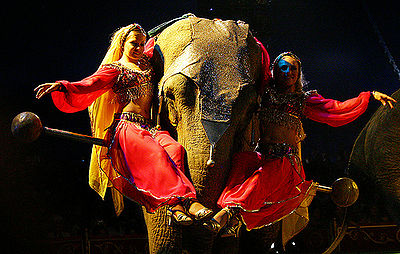
History of animal rights
The ancient attitude toward animals was basically formed by the biblical Book of Genesis which gave Adam, and therefore all of humanity, “dominion over the fish of the sea, and over the fowl of the air, and over the cattle, and over all the earth, and over every creeping thing that creepeth upon the earth.” (Genesis 1:20-28) This was interpreted to mean that animals were put on the earth for the benefit of human beings, so it was considered moral to use animals for food, clothing and entertainment. See more: Pets in Religion
This idea was first challenged in the 17th century, when legislation to protect animals was first passed. In Ireland in 1635, a law prohibited pulling wool off sheep, and the attaching of ploughs to horses’ tails, referring to “the cruelty used to beasts.” The Massachusetts Bay Colony passed a law prohibiting cruelty or tyranny toward domestic animals. Oliver Cromwell’s government passed laws in England against blood sports such as cock fighting and bull baiting. The Puritans interpreted the verse in Genesis to mean that humans must exercise responsible stewardship over animals as opposed to ownership. When Cromwell’s government was overthrown, Charles II overturned the animal protection laws.
The British philosopher John Locke (1632–1704) argued, in Some Thoughts Concerning Education (1693) that animals have feelings. He argued against allowing children to torment animals due to the negative affect it would have on their personalities. The German philosopher Immanuel Kant (1724–1804) agreed with Locke, saying “cruelty to animals is contrary to man’s duty to himself, because it deadens in him the feeling of sympathy for their sufferings, and thus a natural tendency that is very useful to morality in relation to other humans is weakened.”
Starting in the year 1800, several attempts were made to pass animal protection laws in England, but they were unsuccessful. The first significant animal protection law was passed finally in 1822. It was known as Martin’s Act and made it an offense, punishable by fines up to five pounds or two months imprisonment, to “beat, abuse, or ill-treat any horse, mare, gelding, mule, ass, ox, cow, heifer, steer, sheep or other cattle.” Several states in the U.S. followed suit, as did France. Later the English law evolved into the Cruelty to Animals Act 1835, which was emended several times to widen its reach.
The Society for the Prevention of Cruelty to Animals was founded by a number of British MPs in 1824. The first animal protection group in the United States was the American Society for the Prevention of Cruelty to Animals (ASPCA), founded by Henry Bergh in April 1866. A number of other animal rights groups were founded in the late 19th century.
At this time, several philosophers argued that animals have the same rights as human beings to life and liberty. Edward Nicholson (Rights of an Animal, 1879), Arthur Schopenhauer (1788–1860) and Henry Salt (Animals’ Rights: Considered in Relation to Social Progress, 1894) all argued for animal rights.
Animal protection got a boost in the 20th century from an unexpected quarter. In January 1933, the Nazi Party passed the most comprehensive set of animal protection laws in Europe. The Nazis ranked certain animals below the Aryan race and above the Jews. Laws were passed regulating transport of animals by car and train. Some senior SS officers became vegetarians and Hitler himself mostly refrained from eating meat. Experiments on animals were permitted under certain guidelines.
After World War II, animal testing became extremely widespread. In response, a group of intellectuals known as the Oxford Group began to protest this treatment. In 1975, the Australian philosopher, Peter Singer, published his work, Animal Liberation. In this book he argued that there are no logical, moral, or biological grounds to suppose that a violation of the basic interests of a human—for example, the interest in not suffering—is different in any morally significant way from a violation of the basic interests of a non-human. The publication of Singer’s book triggered scholarly interest in animal rights.
In 1976, Ronnie Lee founded the Animal Liberation Front (ALF) in the UK. This organization engages in illegal and sometimes violent behavior in order to save animals from mistreatment. Other animal rights groups focus on cooperation and persuasion. Henry Spira first used this tactic in 1976 when he convinced the American Museum of Natural History to stop experimenting on cats. People for the Ethical Treatment of Animals (PETA) also uses this tactic.
Animal rights issues
Animal rights activists generally object to the use of animal for clothing, food and entertainment.
- Clothing – This includes the use of cow skins for leather, sheep wool for sweaters, fur for coats and down for feathers. Animal rights groups argue that the animals are abused in order to obtain all of these products and that lower demand for them would decrease the amount of animals mistreated and killed.
- Food – Since humans are able to survive without meat, animal rights activists argue that it is preferable for people to be vegetarians or vegans. Animals raised for food or to produce food are manipulated with medications, hormones, genetics, and management techniques. If fewer people ate meat, the farmers would switch to other forms of agriculture and the animals would live a more natural life.
- Entertainment – Animals treated badly for entertainment purposes include animals enclosed in small cages in zoos, racehorses, circus and rodeo animals. Animal “actors” are also frequently mistreated. See more: Treatment of Animals in Entertainment
- Other issues – Other animal rights issues include puppy mills, spaying and neutering, killing of homeless animals, declawing cats, chaining dogs and keeping birds in cages. Animal testing is also a big concern.
Related articles:


